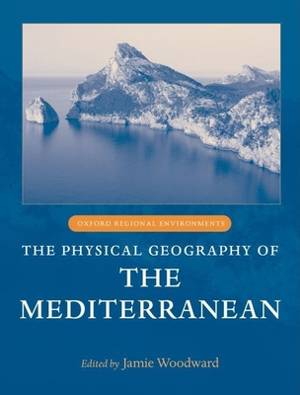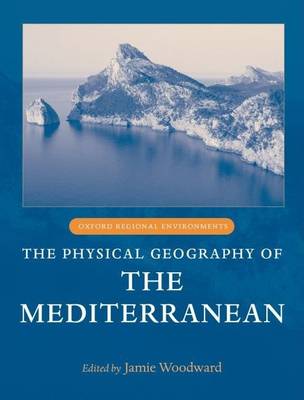
- Afhalen na 1 uur in een winkel met voorraad
- Gratis thuislevering in België vanaf € 30
- Ruim aanbod met 7 miljoen producten
- Afhalen na 1 uur in een winkel met voorraad
- Gratis thuislevering in België vanaf € 30
- Ruim aanbod met 7 miljoen producten
Zoeken
The Physical Geography of the Mediterranean
€ 545,45
+ 1090 punten
Omschrijving
This volume explores the climates, landscapes, ecosystems and hazards that comprise the Mediterranean world. It traces the development of the Mediterranean landscape over very long timescales and examines modern processes and key environmental issues in a wide range of settings. The Mediterranean is the only region on Earth where three continents meet and this interaction has produced a very distinctive Physical Geography. This book examines the landscapes and processes at the margins of these continents and the distinctive marine environment between them. Catastrophic earthquakes, explosive volcanic eruptions and devastating storms and floods are intimately bound up within the history and mythology of the Mediterranean world. This is a key region for the study of natural hazards because it offers unrivalled access to long records of hazard occurrence and impact through documentary, archaeological and geological archives. The Mediterranean is also a biodiversity hotspot; it has
been a meeting place for plants, animals and humans from three continents throughout much of its history. The Quaternary records of these interactions are more varied and better preserved than in any other part of the world. These records have provided important new insights into the tempo of climate, landscape and ecosystem change in the Mediterranean region and beyond. The region is unique because of the very early and widespread impact of humans in landscape and ecosystem change - and the richness of the archaeological and geological archives that chronicle this impact. This book examines this history and these interactions and places current environmental issues in long term context.
been a meeting place for plants, animals and humans from three continents throughout much of its history. The Quaternary records of these interactions are more varied and better preserved than in any other part of the world. These records have provided important new insights into the tempo of climate, landscape and ecosystem change in the Mediterranean region and beyond. The region is unique because of the very early and widespread impact of humans in landscape and ecosystem change - and the richness of the archaeological and geological archives that chronicle this impact. This book examines this history and these interactions and places current environmental issues in long term context.
Specificaties
Betrokkenen
- Uitgeverij:
Inhoud
- Aantal bladzijden:
- 592
- Taal:
- Engels
- Reeks:
Eigenschappen
- Productcode (EAN):
- 9780199268030
- Verschijningsdatum:
- 22/06/2009
- Uitvoering:
- Hardcover
- Formaat:
- Genaaid
- Afmetingen:
- 246 mm x 173 mm
- Gewicht:
- 1684 g

Alleen bij Standaard Boekhandel
+ 1090 punten op je klantenkaart van Standaard Boekhandel
Beoordelingen
We publiceren alleen reviews die voldoen aan de voorwaarden voor reviews. Bekijk onze voorwaarden voor reviews.










